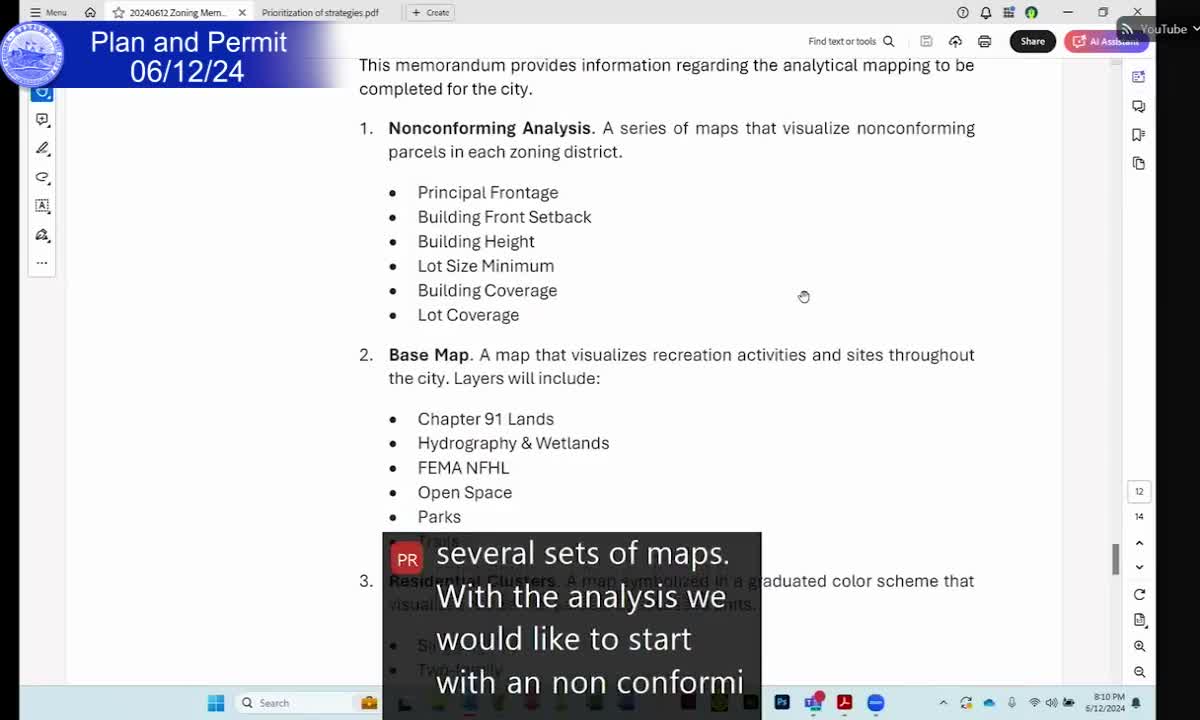Council prioritizes urgent zoning reforms for affordable housing
June 12, 2024 | Medford City, Middlesex County, Massachusetts

This article was created by AI summarizing key points discussed. AI makes mistakes, so for full details and context, please refer to the video of the full meeting. Please report any errors so we can fix them. Report an error »

In a recent government meeting, officials discussed the ongoing development of a comprehensive mapping project aimed at analyzing zoning districts in Medford. The project will identify non-conforming parcels by examining key characteristics such as frontage, setback, height, lot size, and coverage. The team plans to create a base map that highlights significant geographical features, including rivers, parks, and transit stations, to enhance readability and usability for future analyses.
The mapping initiative will consist of multiple thematic layers, allowing for detailed assessments of residential clusters, transit accessibility, socio-economic demographics, and environmental justice populations. Officials emphasized the importance of integrating various data sets, including neighborhood-specific information, to facilitate a thorough understanding of the city's landscape.
Councilors expressed their priorities for the upcoming phases of the project, with a strong focus on affordable housing, climate resilience, and balanced growth. Councilor Callahan highlighted the need for walkable neighborhoods and energy-efficient existing buildings, while Councilor Tsang echoed similar sentiments regarding housing and climate action. The discussion underscored a collective urgency to rezone key corridors, particularly along Salem Street and Mystic Avenue, to promote denser, mixed-use developments that align with the city’s long-term goals.
As the meeting concluded, officials reiterated their commitment to advancing the mapping project and addressing the pressing needs of the community, ensuring that the data collected will inform future zoning decisions and urban planning strategies.
The mapping initiative will consist of multiple thematic layers, allowing for detailed assessments of residential clusters, transit accessibility, socio-economic demographics, and environmental justice populations. Officials emphasized the importance of integrating various data sets, including neighborhood-specific information, to facilitate a thorough understanding of the city's landscape.
Councilors expressed their priorities for the upcoming phases of the project, with a strong focus on affordable housing, climate resilience, and balanced growth. Councilor Callahan highlighted the need for walkable neighborhoods and energy-efficient existing buildings, while Councilor Tsang echoed similar sentiments regarding housing and climate action. The discussion underscored a collective urgency to rezone key corridors, particularly along Salem Street and Mystic Avenue, to promote denser, mixed-use developments that align with the city’s long-term goals.
As the meeting concluded, officials reiterated their commitment to advancing the mapping project and addressing the pressing needs of the community, ensuring that the data collected will inform future zoning decisions and urban planning strategies.
View full meeting
This article is based on a recent meeting—watch the full video and explore the complete transcript for deeper insights into the discussion.
View full meeting
